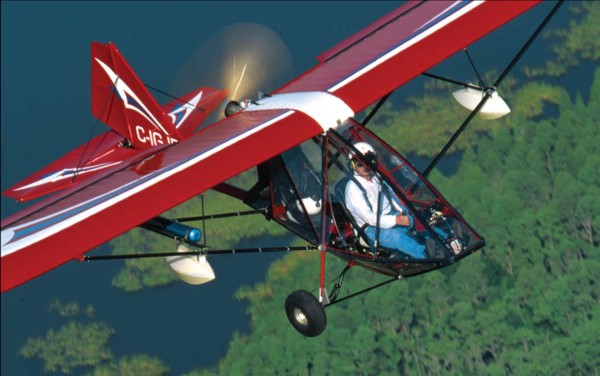
The Beaver and Chinook ultralight-like aircraft are arguably two of the bestknown lightweight designs coming from Canada. Aircraft Sales and Parts, more commonly known as ASAP, is the company that rescued and now manufactures and sells these designs, along with a powered parachute from its sister company, Summit Powered Parachutes. The tale of ASAP’s involvement with the Chinook and Beaver offers insight into ultralight progress – Canadian style. A History Lesson Perhaps the most famous ultralight to come out of Canada is the Beaver. With a reported 2,200 flying units since the early 1980s, it’s a successful design. However, due to corporate missteps by the companies that owned the brand, the Beaver series was nearly lost. Originally, the Beaver models were manufactured by Spectrum Aircraft Inc. Reorganization left the ultralight in the hands of a company called Beaver RX Enterprises. In 1993, that company closed its doors and stranded thousands of Beaver aircraft owners, along with all the dealerships that sold and serviced them.


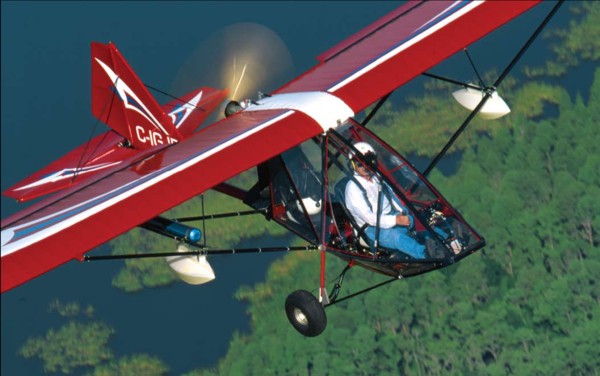 The Beaver and Chinook ultralight-like aircraft are arguably two of the bestknown
lightweight designs coming from Canada. Aircraft Sales and Parts, more
commonly known as ASAP, is the company that rescued and now manufactures
and sells these designs, along with a powered parachute from its sister company,
Summit Powered Parachutes. The tale of ASAP's involvement with the Chinook
and Beaver offers insight into ultralight progress - Canadian style.
The Beaver and Chinook ultralight-like aircraft are arguably two of the bestknown
lightweight designs coming from Canada. Aircraft Sales and Parts, more
commonly known as ASAP, is the company that rescued and now manufactures
and sells these designs, along with a powered parachute from its sister company,
Summit Powered Parachutes. The tale of ASAP's involvement with the Chinook
and Beaver offers insight into ultralight progress - Canadian style.
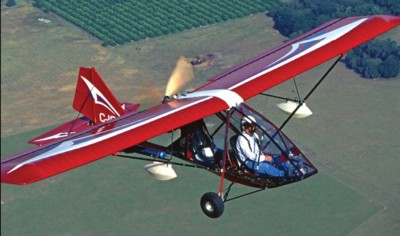 Perhaps the most famous ultralight
to come out of Canada is the Beaver.
With a reported 2,200 flying units
since the early 1980s, it's a successful
design. However, due to corporate
missteps by the companies that
owned the brand, the Beaver series
was nearly lost. Originally, the Beaver
models were manufactured by
Spectrum Aircraft Inc. Reorganization
left the ultralight in the hands
of a company called Beaver RX Enterprises.
In 1993, that company closed
its doors and stranded thousands of
Beaver aircraft owners, along with
all the dealerships that sold and serviced
them.
Perhaps the most famous ultralight
to come out of Canada is the Beaver.
With a reported 2,200 flying units
since the early 1980s, it's a successful
design. However, due to corporate
missteps by the companies that
owned the brand, the Beaver series
was nearly lost. Originally, the Beaver
models were manufactured by
Spectrum Aircraft Inc. Reorganization
left the ultralight in the hands
of a company called Beaver RX Enterprises.
In 1993, that company closed
its doors and stranded thousands of
Beaver aircraft owners, along with
all the dealerships that sold and serviced
them.
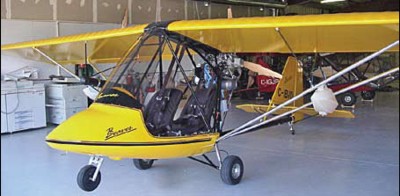 Luckily, Brent and Paulette Holomis,
the owners of ASAP, stepped in
to fill this void. Having already saved
the Chinook ultralight following the
closing of Birdman Enterprises, ASAP
was in position to help. Brent explains,
"Because the Chinook Plus 2 is
similar in construction to the Beaver,
we were approached by some Beaver
dealers and customers to see if we
could somehow provide them with
parts for their existing aircraft."
The company did more than just
take over these disappearing designs.
Thanks to focus and a related machine
shop business, ASAP was able
to make improvements on both airplanes.
Today, both Chinook and the
Beaver have the suffix Plus added to
them to denote the additional design
work done.
Luckily, Brent and Paulette Holomis,
the owners of ASAP, stepped in
to fill this void. Having already saved
the Chinook ultralight following the
closing of Birdman Enterprises, ASAP
was in position to help. Brent explains,
"Because the Chinook Plus 2 is
similar in construction to the Beaver,
we were approached by some Beaver
dealers and customers to see if we
could somehow provide them with
parts for their existing aircraft."
The company did more than just
take over these disappearing designs.
Thanks to focus and a related machine
shop business, ASAP was able
to make improvements on both airplanes.
Today, both Chinook and the
Beaver have the suffix Plus added to
them to denote the additional design
work done.
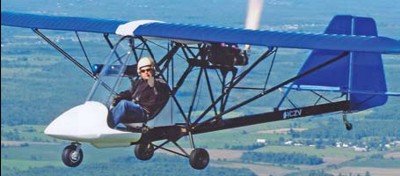 ASAP's array of computer-controlled
machines allows the company
to build parts in-house when many
other manufacturers must go outside
to obtain similar quality hardware.
Those who compare ASAP to Quicksilver
Aircraft, which also has significant
machining capability, are close
to the mark.
ASAP operates out of two locations.
The company manufactures
all parts and components for both
Chinooks and Beavers at its headquarters
in St. Paul, Alberta, Canada.
Another location, in Vernon,
British Columbia, handles all airplane
inquiries and processes part
orders. Technical support and new
product testing is also conducted
in Vernon.
ASAP's array of computer-controlled
machines allows the company
to build parts in-house when many
other manufacturers must go outside
to obtain similar quality hardware.
Those who compare ASAP to Quicksilver
Aircraft, which also has significant
machining capability, are close
to the mark.
ASAP operates out of two locations.
The company manufactures
all parts and components for both
Chinooks and Beavers at its headquarters
in St. Paul, Alberta, Canada.
Another location, in Vernon,
British Columbia, handles all airplane
inquiries and processes part
orders. Technical support and new
product testing is also conducted
in Vernon.
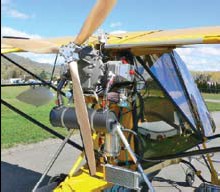 ASAP also has four corporate divisions:
Steel Breeze Powered Parachutes
(www.SteelBreeze.ca), UL Parts
(www.ULParts.com), PPC Canopies
(www.PPCCanopies.com), and Summit
Powered Parachutes (www.Summit-
PPC.com).
The Chinook
Before being rescued by ASAP, some
700 Chinooks had been manufactured
by Birdman Enterprises,
which did a great job of originating
this machine. Canadians in particular,
and ultralight enthusiasts all
over the world, celebrated ASAP's
support of this unique light aircraft
when the company took over the
design in 1988, and reintroduced
the design in 1989.
Though the Chinook's wide cockpit
gives it a pudgy appearance from
some vantage points, the design slips
through the air quite well. It has
light and powerful ailerons, which
makes it easy to guide through the
air. In general, the plane's handling
is quite pleasant despite, or perhaps
because of, its unorthodox shape.
ASAP also has four corporate divisions:
Steel Breeze Powered Parachutes
(www.SteelBreeze.ca), UL Parts
(www.ULParts.com), PPC Canopies
(www.PPCCanopies.com), and Summit
Powered Parachutes (www.Summit-
PPC.com).
The Chinook
Before being rescued by ASAP, some
700 Chinooks had been manufactured
by Birdman Enterprises,
which did a great job of originating
this machine. Canadians in particular,
and ultralight enthusiasts all
over the world, celebrated ASAP's
support of this unique light aircraft
when the company took over the
design in 1988, and reintroduced
the design in 1989.
Though the Chinook's wide cockpit
gives it a pudgy appearance from
some vantage points, the design slips
through the air quite well. It has
light and powerful ailerons, which
makes it easy to guide through the
air. In general, the plane's handling
is quite pleasant despite, or perhaps
because of, its unorthodox shape.
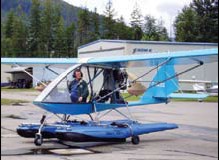 The Chinook was not always fully
enclosed; ASAP added a full Lexan enclosure
for the Chinook Plus, making
a virtual greenhouse surrounding the
pilot and passenger with many square
feet of clear plastic offering an unlimited
view. Even in colder northern climates,
that enclosure provides a reasonably
comfortable environment.
Entering a Chinook means lifting
yourself over about 6 inches of structure,
which could prove a bit challenging
for less flexible aviators, but
once you swing into position you'll
love the roominess. Even with a rearseat
passenger's feet on rudder pedals
right alongside your seat, space is
plentiful. If you have some extra girth
yourself, the Chinook Plus might accommodate
you more comfortably
than some other designs.
ASAP offers the Chinook with the
Rotax 503 or 582 engines, the HKS
700E, or the more powerful Rotax 912.
The Beaver
The Chinook was not always fully
enclosed; ASAP added a full Lexan enclosure
for the Chinook Plus, making
a virtual greenhouse surrounding the
pilot and passenger with many square
feet of clear plastic offering an unlimited
view. Even in colder northern climates,
that enclosure provides a reasonably
comfortable environment.
Entering a Chinook means lifting
yourself over about 6 inches of structure,
which could prove a bit challenging
for less flexible aviators, but
once you swing into position you'll
love the roominess. Even with a rearseat
passenger's feet on rudder pedals
right alongside your seat, space is
plentiful. If you have some extra girth
yourself, the Chinook Plus might accommodate
you more comfortably
than some other designs.
ASAP offers the Chinook with the
Rotax 503 or 582 engines, the HKS
700E, or the more powerful Rotax 912.
The Beaver
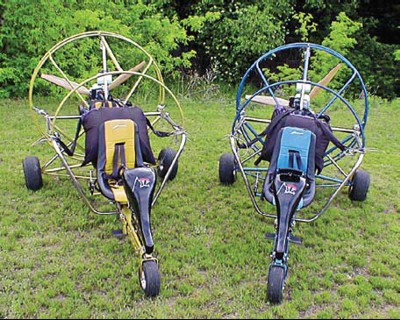 As it had done with the Chinook,
ASAP added value to the Beaver
RX550 by finishing the wing in conventional
dope and fabric (Ceconite),
rather than the original pre-sewn Dacron
envelopes. Using Ceconite increases
manufacturing time and adds
quite a few pounds (with paint), but
it lasts much longer, especially when
an aircraft is stored outside. With the
conversion to the Ceconite wing covering
also came a change in rib spacing
from 18 or 20 inches apart to 6
inches apart, which allows the wing
to hold its airfoil shape better and improves
performance slightly.
As it had done with the Chinook,
ASAP added value to the Beaver
RX550 by finishing the wing in conventional
dope and fabric (Ceconite),
rather than the original pre-sewn Dacron
envelopes. Using Ceconite increases
manufacturing time and adds
quite a few pounds (with paint), but
it lasts much longer, especially when
an aircraft is stored outside. With the
conversion to the Ceconite wing covering
also came a change in rib spacing
from 18 or 20 inches apart to 6
inches apart, which allows the wing
to hold its airfoil shape better and improves
performance slightly.
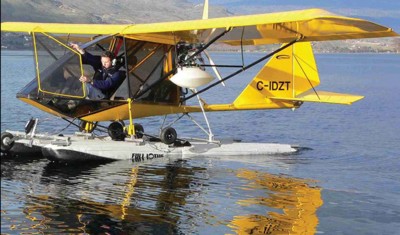 ASAP also increased sleeving in the
leading edge and replaced cable bracing
with tubing. Subsequent to these
changes, the design was subjected to
full static loading, with independent
analysis offered by a local university.
As proof of the design's longevity,
Brent reports that one Beaver RX550
has accumulated more than 2,000
hours while on duty in South Africa.
Those who own older RX550s may
purchase a conversion kit to upgrade
the earlier models.
Build time for the RX550 kit is estimated
by ASAP as 150 to 180 hours.
The builder simply assembles the kit,
no component fabrication is necessary,
and part accuracy is good-
thanks to the company's computercontrolled
machining.
ASAP also supports a wide selection
of engines for the RX550. Builders can
choose a Rotax 582 or 912, but ASAP
also works closely with HPower Ltd.,
in fitting the HKS 700E four-stroke
engine on the Beaver airframe.
The control system of the Beaver
RX550 Plus is quite conventional, using
pushrods to control ailerons, and
cables to effect rudder movements. It
has full-span ailerons, which Brent
says improves the handling significantly
on the RX550 Plus over the
original version. The RX550 Plus does
not have flaps, flaperons, or other
glide path control devices, though
ASAP indicated these devices might
be added in the future. Nor does it
have trim; however, an inventive kit
builder could create a trim system.
The Beaver RX550 Plus does have
the ultralight-like nose cone and
windscreen, but it opens to the sides,
giving open-air enthusiasts a machine
they'll enjoy.
A Single-Seater
Both the Chinook Plus and RX550
Plus are two-place machines. With
the ultralight exemption in the United
States expiring on January 31,
American owners of these two-place
machines will need to convert their
aircraft to experimental light-sport
aircraft (E-LSA) or experimental amateur-
built status to remain legal, while
our Canadian friends may continue
to fly these machines under Canada's
ultralight regulations.
ASAP has now introduced a singleseat
version of the Beaver. This recent
offering brings a pleasantly light
version of the former RX35 model
powered by a 40-hp Rotax 447 for
$17,500. At a typical empty weight
of 340 pounds, the Beaver SS doesn't
qualify as a Part 103 ultralight here
in the United States, but it does meet
Canada's rules and offers 300 pounds
of useful load. Americans who relish
single-seat aircraft could build this
machine as an amateur-built aircraft
and fly it as a sport pilot.
ASAP also increased sleeving in the
leading edge and replaced cable bracing
with tubing. Subsequent to these
changes, the design was subjected to
full static loading, with independent
analysis offered by a local university.
As proof of the design's longevity,
Brent reports that one Beaver RX550
has accumulated more than 2,000
hours while on duty in South Africa.
Those who own older RX550s may
purchase a conversion kit to upgrade
the earlier models.
Build time for the RX550 kit is estimated
by ASAP as 150 to 180 hours.
The builder simply assembles the kit,
no component fabrication is necessary,
and part accuracy is good-
thanks to the company's computercontrolled
machining.
ASAP also supports a wide selection
of engines for the RX550. Builders can
choose a Rotax 582 or 912, but ASAP
also works closely with HPower Ltd.,
in fitting the HKS 700E four-stroke
engine on the Beaver airframe.
The control system of the Beaver
RX550 Plus is quite conventional, using
pushrods to control ailerons, and
cables to effect rudder movements. It
has full-span ailerons, which Brent
says improves the handling significantly
on the RX550 Plus over the
original version. The RX550 Plus does
not have flaps, flaperons, or other
glide path control devices, though
ASAP indicated these devices might
be added in the future. Nor does it
have trim; however, an inventive kit
builder could create a trim system.
The Beaver RX550 Plus does have
the ultralight-like nose cone and
windscreen, but it opens to the sides,
giving open-air enthusiasts a machine
they'll enjoy.
A Single-Seater
Both the Chinook Plus and RX550
Plus are two-place machines. With
the ultralight exemption in the United
States expiring on January 31,
American owners of these two-place
machines will need to convert their
aircraft to experimental light-sport
aircraft (E-LSA) or experimental amateur-
built status to remain legal, while
our Canadian friends may continue
to fly these machines under Canada's
ultralight regulations.
ASAP has now introduced a singleseat
version of the Beaver. This recent
offering brings a pleasantly light
version of the former RX35 model
powered by a 40-hp Rotax 447 for
$17,500. At a typical empty weight
of 340 pounds, the Beaver SS doesn't
qualify as a Part 103 ultralight here
in the United States, but it does meet
Canada's rules and offers 300 pounds
of useful load. Americans who relish
single-seat aircraft could build this
machine as an amateur-built aircraft
and fly it as a sport pilot.
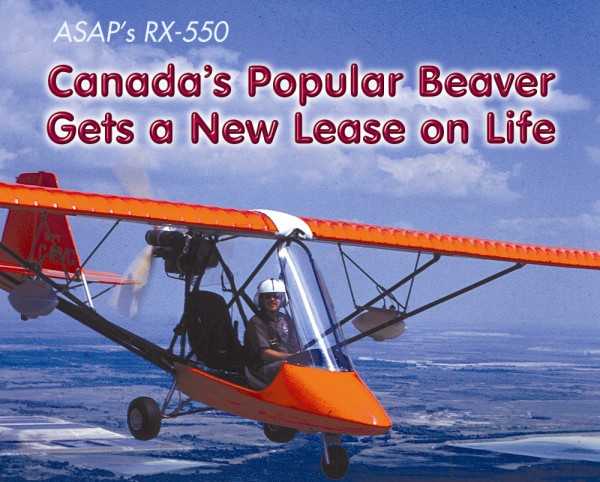

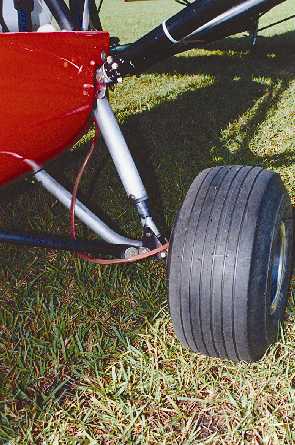


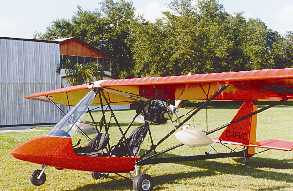


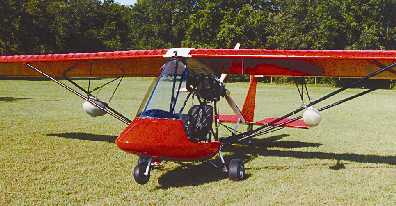



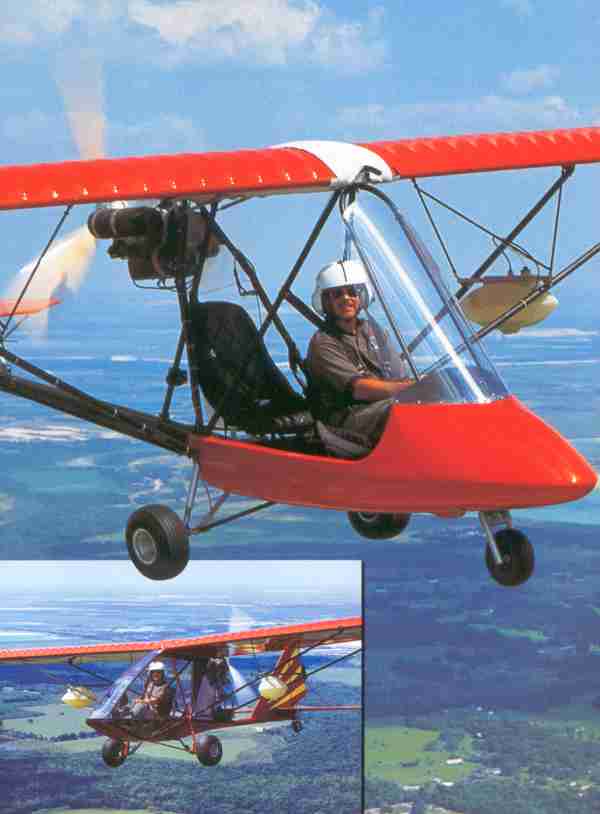

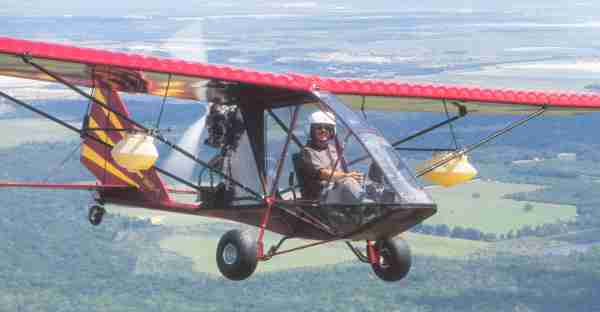 The wide open cabin is surrounded by well supported clear Lexan giving you a panoramic view from either seat. Tandem aircraft often cramp the aft seat and don't give it the best visibility, but Chinook sets a new standard. Your passenger or student will also enjoy plenty of room; a set of dual controls means the Chinook can easily be used for training flight.
After the ASAP company took over production they made numerous refinements that earn the name Chinook Plus 2, and those who have seen the older, simpler Chinooks need to reexamine the current model.
Flight characteristics of the old Chinook were largely preserved as the machine made the transition from simple single seater to the feature laden two seaters of today. A versatile design, Chinook endures for many good reasons.
The wide open cabin is surrounded by well supported clear Lexan giving you a panoramic view from either seat. Tandem aircraft often cramp the aft seat and don't give it the best visibility, but Chinook sets a new standard. Your passenger or student will also enjoy plenty of room; a set of dual controls means the Chinook can easily be used for training flight.
After the ASAP company took over production they made numerous refinements that earn the name Chinook Plus 2, and those who have seen the older, simpler Chinooks need to reexamine the current model.
Flight characteristics of the old Chinook were largely preserved as the machine made the transition from simple single seater to the feature laden two seaters of today. A versatile design, Chinook endures for many good reasons.
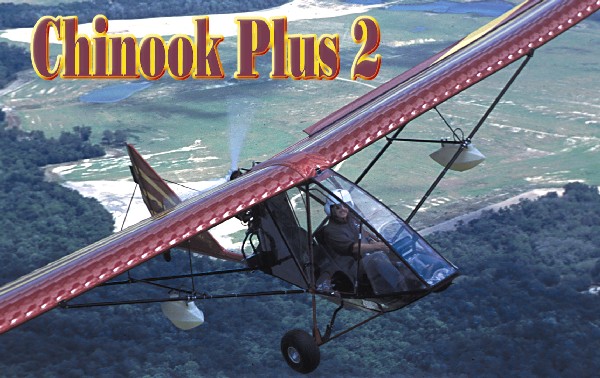 Over the years, ASAP's business has expanded and the western Canada company now sells the Chinook Plus 2 and the Beaver RX-550 Plus, tagging both models with the "plus" suffix that indicates the ASAP team improved and refined the aircraft after their acquisition of the models.
I find it impressive that two of Canada's most popular ultralights are now built by ASAP, a company that rescued these designs after the original companies failed. Birdman Enterprises designed and built the Chinook, and Spectrum Aircraft built the Beaver RX-550 (though the latter company went through a few name/ownership changes before succumbing completely).
Over the years, ASAP's business has expanded and the western Canada company now sells the Chinook Plus 2 and the Beaver RX-550 Plus, tagging both models with the "plus" suffix that indicates the ASAP team improved and refined the aircraft after their acquisition of the models.
I find it impressive that two of Canada's most popular ultralights are now built by ASAP, a company that rescued these designs after the original companies failed. Birdman Enterprises designed and built the Chinook, and Spectrum Aircraft built the Beaver RX-550 (though the latter company went through a few name/ownership changes before succumbing completely).
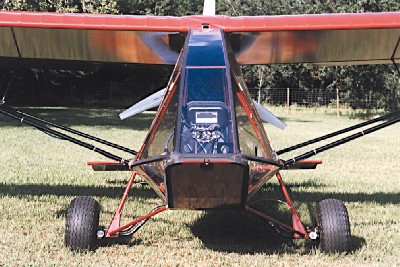 With some 700 Chinooks flying and at least 2,000 Beavers delivered, Canadians in particular and ultralight/microlight enthusiasts everywhere should rejoice that ASAP and the Holomis family has chosen to support these two design success stories.
Today, Brent and crew have logged 10 years as producer of the Chinook. I was pleased to fly the machine, and to update your understanding and awareness of this nice-flying Canadian ultralight.
With some 700 Chinooks flying and at least 2,000 Beavers delivered, Canadians in particular and ultralight/microlight enthusiasts everywhere should rejoice that ASAP and the Holomis family has chosen to support these two design success stories.
Today, Brent and crew have logged 10 years as producer of the Chinook. I was pleased to fly the machine, and to update your understanding and awareness of this nice-flying Canadian ultralight.
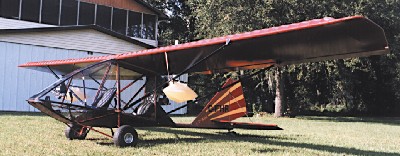 If you walk around the front of the design and sight down the nose toward the tail, you can see how the fairing got so wide when the design became fully-enclosed years ago. The landing gear struts extend up to the leading edge at the wing's center. Since the enclosure goes around these struts, the cockpit is made very broad.
Putting your bottom in the seat means lifting yourself over 6 or so inches of cockpit to the side of the seat. However, once you swing into position, you'll love the roominess. Even with a rear seat passenger's feet on rudder pedals right alongside your seat, space is plentiful. If you're a wide pilot, this machine might be your dream.
In the cockpit are the following controls: Center-mounted joystick with hydraulic brake lever on the front side. To your left and behind you somewhat you'll find a single throttle with two handles, one extended forward and one aft.
If you walk around the front of the design and sight down the nose toward the tail, you can see how the fairing got so wide when the design became fully-enclosed years ago. The landing gear struts extend up to the leading edge at the wing's center. Since the enclosure goes around these struts, the cockpit is made very broad.
Putting your bottom in the seat means lifting yourself over 6 or so inches of cockpit to the side of the seat. However, once you swing into position, you'll love the roominess. Even with a rear seat passenger's feet on rudder pedals right alongside your seat, space is plentiful. If you're a wide pilot, this machine might be your dream.
In the cockpit are the following controls: Center-mounted joystick with hydraulic brake lever on the front side. To your left and behind you somewhat you'll find a single throttle with two handles, one extended forward and one aft.
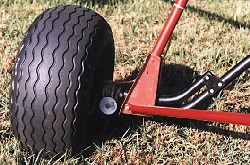 To me, the throttle idea seems taking simplicity too far. Dual throttle positions don't add that much weight or complexity but might be much more convenient. In the Chinook system, both pilots must reach somewhat awkwardly. I think such an important control needs to be more accessible. As I flew from the front, I had to feel around in back and to the side - somewhat like reaching for my wallet - to find the throttle. Maintaining a hand on the throttle, as is standard practice for most pilots, means holding your arm somewhat awkwardly behind you.
On the right side of the Chinook cabin is a control panel. It held the ignition switches, master switch, starter, primer and optional prop control lever. In front of the front-seat pilot, ASAP had installed the MaxPak instrument deck with its full complement of gauges. The electronic panel switches from cylinder to cylinder (on CHT or EGT) and offers other control by switch. It was the easiest-to-read instrument deck I've ever used. Below the MaxPak, ASAP had installed a few more temperature and pressure gauges to monitor the new 60-hp HKS 700E 4-cycle engine.
To me, the throttle idea seems taking simplicity too far. Dual throttle positions don't add that much weight or complexity but might be much more convenient. In the Chinook system, both pilots must reach somewhat awkwardly. I think such an important control needs to be more accessible. As I flew from the front, I had to feel around in back and to the side - somewhat like reaching for my wallet - to find the throttle. Maintaining a hand on the throttle, as is standard practice for most pilots, means holding your arm somewhat awkwardly behind you.
On the right side of the Chinook cabin is a control panel. It held the ignition switches, master switch, starter, primer and optional prop control lever. In front of the front-seat pilot, ASAP had installed the MaxPak instrument deck with its full complement of gauges. The electronic panel switches from cylinder to cylinder (on CHT or EGT) and offers other control by switch. It was the easiest-to-read instrument deck I've ever used. Below the MaxPak, ASAP had installed a few more temperature and pressure gauges to monitor the new 60-hp HKS 700E 4-cycle engine.
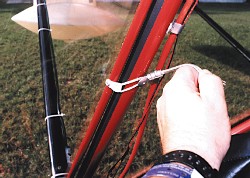 As you turn to secure the door with ASAP's little bungee cord fastener - which worked quite effectively - you can't help but notice the massive amount of clear area surrounding you. The visibility from the front seat of the Chinook is simply huge, even before you leave the ground. Noting how slick and clear their windscreen and enclosure appeared, Brent Holomis confided, "Lemon Pledge® is the secret." Certainly, it was easy on the eye.
As you turn to secure the door with ASAP's little bungee cord fastener - which worked quite effectively - you can't help but notice the massive amount of clear area surrounding you. The visibility from the front seat of the Chinook is simply huge, even before you leave the ground. Noting how slick and clear their windscreen and enclosure appeared, Brent Holomis confided, "Lemon Pledge® is the secret." Certainly, it was easy on the eye.
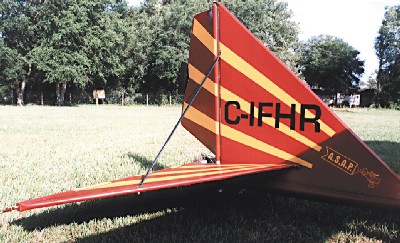 If it means something to Harley today, perhaps it will one day mean something to HPower (the U.S. importer) and HKS, because the newest 4-stroke aircraft engine certainly has its own sound. Amid a setting of 2-stroke-powered ultralights, the 700E is unmistakable, even compared to other 4-stroke engines.
I'd been told (in all HKS installations) to watch for oil temperatures higher than 200° - it never came close, typically running under 180° in the Chinook - and for adequate oil pressure. The HKS seemed hardly to be working to fly me and the Chinook around. I imagine it would do nearly as well even loaded with two large pilots.
ASAP builders did a great job of fitting the HKS, nestled as it is behind the rear cabin bulkhead. Lowering the engine below the upper wing trailing edge assures the upper surface stays uncluttered and efficient. It also gave the Chinook smooth lines visually.
As with other new installers of the HKS, Holomis had to experiment with the right position for the oil cooler radiator. It's a little thing, but it needs adequate airflow. The smooth exterior of the Chinook enclosure forced ASAP to move the cooler around, seeking the right spot.
If it means something to Harley today, perhaps it will one day mean something to HPower (the U.S. importer) and HKS, because the newest 4-stroke aircraft engine certainly has its own sound. Amid a setting of 2-stroke-powered ultralights, the 700E is unmistakable, even compared to other 4-stroke engines.
I'd been told (in all HKS installations) to watch for oil temperatures higher than 200° - it never came close, typically running under 180° in the Chinook - and for adequate oil pressure. The HKS seemed hardly to be working to fly me and the Chinook around. I imagine it would do nearly as well even loaded with two large pilots.
ASAP builders did a great job of fitting the HKS, nestled as it is behind the rear cabin bulkhead. Lowering the engine below the upper wing trailing edge assures the upper surface stays uncluttered and efficient. It also gave the Chinook smooth lines visually.
As with other new installers of the HKS, Holomis had to experiment with the right position for the oil cooler radiator. It's a little thing, but it needs adequate airflow. The smooth exterior of the Chinook enclosure forced ASAP to move the cooler around, seeking the right spot.
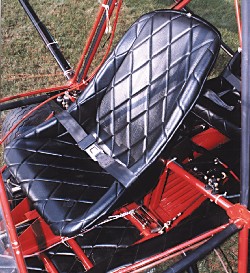 Brent Holomis expressed a lot of satisfaction with the HKS engine and spoke highly of his dealings with HPower personnel. Also like other new installers, he sees a market for HKS-powered Chinooks among pilots who prefer 4-stroke engines. It certainly seems appropriate for many 2-seat ultralight designs at its rated 60 horsepower.
Finally, Holomis mentioned the smooth torque power through a wide operating range and the very low fuel usage. Some users report as low as 2.0 gallons per hour, though 3.0 or so is more common. Regardless, this is less than a Rotax 503 doing the same work, and far less than a Rotax 582.
Brent Holomis expressed a lot of satisfaction with the HKS engine and spoke highly of his dealings with HPower personnel. Also like other new installers, he sees a market for HKS-powered Chinooks among pilots who prefer 4-stroke engines. It certainly seems appropriate for many 2-seat ultralight designs at its rated 60 horsepower.
Finally, Holomis mentioned the smooth torque power through a wide operating range and the very low fuel usage. Some users report as low as 2.0 gallons per hour, though 3.0 or so is more common. Regardless, this is less than a Rotax 503 doing the same work, and far less than a Rotax 582.
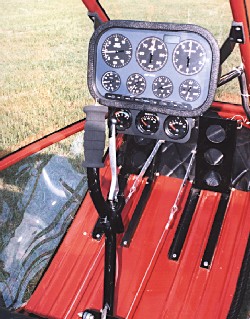 Takeoff and landing operations in the Chinook were extraordinarily easy. Every variation of speed, approach angles or descent technique I attempted made me look good. One reason this is so relates to the huge vision you have from the front seat. I never flew from the rear, but I'm sure it would be much compromised compared to the nose seat.
Another reason for the easy landings is the good roll control the Chinook shows. And it doesn't hurt that the large enclosure provides for excellent slip potential. For this reason, flaps aren't necessary to someone with a good slip technique.
Climb was strong thanks to the high-torque HKS engine. It isn't so much the rate of the climb with the 4-stroke engine; it's the way the 700E bears the load of a high-angled prop. Most 2-strokes express a sound of laboring when you nose-up steeply and climb for a sustained time. The HKS kept pushing us aloft without the slightest protest.
Takeoff and landing operations in the Chinook were extraordinarily easy. Every variation of speed, approach angles or descent technique I attempted made me look good. One reason this is so relates to the huge vision you have from the front seat. I never flew from the rear, but I'm sure it would be much compromised compared to the nose seat.
Another reason for the easy landings is the good roll control the Chinook shows. And it doesn't hurt that the large enclosure provides for excellent slip potential. For this reason, flaps aren't necessary to someone with a good slip technique.
Climb was strong thanks to the high-torque HKS engine. It isn't so much the rate of the climb with the 4-stroke engine; it's the way the 700E bears the load of a high-angled prop. Most 2-strokes express a sound of laboring when you nose-up steeply and climb for a sustained time. The HKS kept pushing us aloft without the slightest protest.
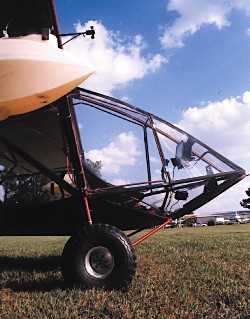 One thing you are always sure about in the Chinook is the fuel quantity. I have heard a few detractors say that airplanes shouldn't carry their fuel dangling from a wing strut. Fuel lines also must route a good distance and do so through the cabin (via a fuel control valve).
However, several hundred Chinooks have been operating this way for years without publicized problems. With the Chinook fuel tanks kept well away from the pilot, an incident may be less of a hazard thanks to this design.
No matter what else, anyone has to agree that seeing your remaining fuel couldn't get much easier. The Chinook's fuel cells are shapely to reduce drag.
Not much other space exists in the fuselage to put fuel (assuming that's where you believe it should be). And despite the cockpit's broad space, the Chinook provides no cargo room - unless that's how you use the back seat.
One thing you are always sure about in the Chinook is the fuel quantity. I have heard a few detractors say that airplanes shouldn't carry their fuel dangling from a wing strut. Fuel lines also must route a good distance and do so through the cabin (via a fuel control valve).
However, several hundred Chinooks have been operating this way for years without publicized problems. With the Chinook fuel tanks kept well away from the pilot, an incident may be less of a hazard thanks to this design.
No matter what else, anyone has to agree that seeing your remaining fuel couldn't get much easier. The Chinook's fuel cells are shapely to reduce drag.
Not much other space exists in the fuselage to put fuel (assuming that's where you believe it should be). And despite the cockpit's broad space, the Chinook provides no cargo room - unless that's how you use the back seat.
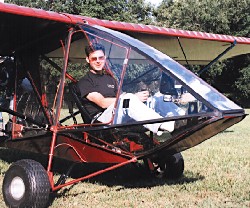 While I liked flying the Chinook a great deal, the rear seat didn't interest me much. The rear occupant's head is mere inches away from the engine. While it appears stoutly braced and I know of no problems related to this close engine, I should think noise and vibration might be offensive. Entry requires twisting around the strut placement. However, I didn't fly in the rear and I make no condemnation of the design. Since most pilots probably use the rear seat for stuff they want to bring aloft, the whole point may often be moot.
While I liked flying the Chinook a great deal, the rear seat didn't interest me much. The rear occupant's head is mere inches away from the engine. While it appears stoutly braced and I know of no problems related to this close engine, I should think noise and vibration might be offensive. Entry requires twisting around the strut placement. However, I didn't fly in the rear and I make no condemnation of the design. Since most pilots probably use the rear seat for stuff they want to bring aloft, the whole point may often be moot.
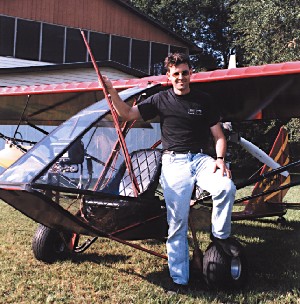 The Chinook can run to about 90 mph with the HKS engine on it. High cruise appeared to be in the range of 75 to 80 mph and an economical cruise brought her down to about 60 to 65. At the latter power setting and flown solo with a little baggage and full fuel, my guess is the HKS might burn only a couple gallons an hour. This would yield an endurance of close to 5 hours with standard wing strut tanks. Even flown at gross weight, you'll probably still get more than 3 hours aloft.
Stalls came in at 35 to 40 mph, usually hovering toward the low end of that range as I flew it. In all cases, stalls were mild and uneventful. With full power, the Chinook simply keeps climbing even with full backstick. The nose wanders a bit in this position, but not frighteningly so. Power-off stalls were very mild, as well, breaking but only subtly. I actually prefer a cleaner break so I know it happened, but I don't see pilots getting into any trouble with the Chinook. I can guess that stalls at gross might climb close to 40 mph, but the characteristics should stay similar.
The Chinook can run to about 90 mph with the HKS engine on it. High cruise appeared to be in the range of 75 to 80 mph and an economical cruise brought her down to about 60 to 65. At the latter power setting and flown solo with a little baggage and full fuel, my guess is the HKS might burn only a couple gallons an hour. This would yield an endurance of close to 5 hours with standard wing strut tanks. Even flown at gross weight, you'll probably still get more than 3 hours aloft.
Stalls came in at 35 to 40 mph, usually hovering toward the low end of that range as I flew it. In all cases, stalls were mild and uneventful. With full power, the Chinook simply keeps climbing even with full backstick. The nose wanders a bit in this position, but not frighteningly so. Power-off stalls were very mild, as well, breaking but only subtly. I actually prefer a cleaner break so I know it happened, but I don't see pilots getting into any trouble with the Chinook. I can guess that stalls at gross might climb close to 40 mph, but the characteristics should stay similar.
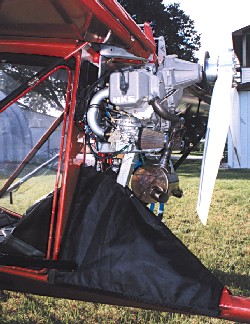 One surprising performance fact is the low sink rate of the Chinook. This wing design has impressed me before and a descent rate near 350 feet per minute beats virtually every other ultralight 2-seater I've flown. Glide didn't seem quite as strong, and yet the two parameters are somewhat linked. I can't explain, but feel confident the sink rate is superior. This is good to know if you must ever glide to a landing.
Two lone complaints in the safety arena are: (1) no standard shoulder belts (they're optional) and (2) no parachute was fitted (also optional). I'd sure like it better when flying new ultralights if manufacturers would install them.
One surprising performance fact is the low sink rate of the Chinook. This wing design has impressed me before and a descent rate near 350 feet per minute beats virtually every other ultralight 2-seater I've flown. Glide didn't seem quite as strong, and yet the two parameters are somewhat linked. I can't explain, but feel confident the sink rate is superior. This is good to know if you must ever glide to a landing.
Two lone complaints in the safety arena are: (1) no standard shoulder belts (they're optional) and (2) no parachute was fitted (also optional). I'd sure like it better when flying new ultralights if manufacturers would install them.
